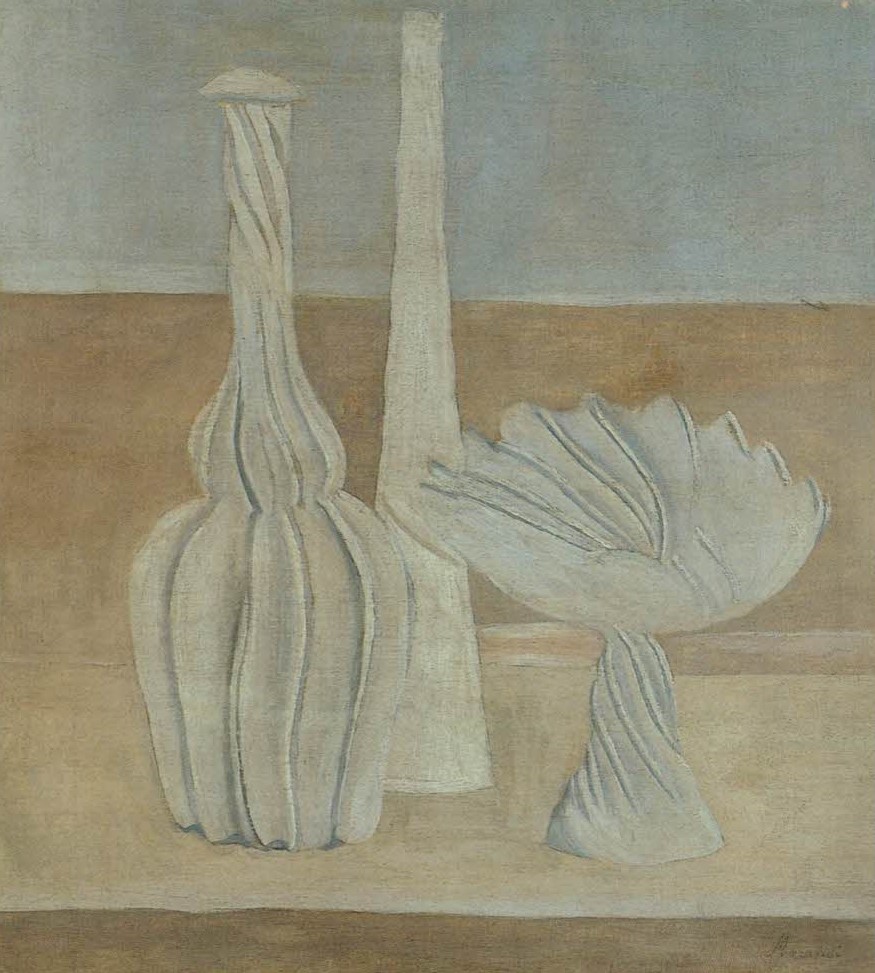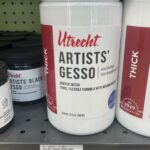A comprehensive guide to still life drawing
Still life drawing is a genre of art that involves creating a drawing or painting of inanimate objects arranged in a particular composition.
In a still life, the objects can range from everyday items like fruits, flowers, and household objects to more complex arrangements that include textiles, pottery, or even sculptures.
The purpose of still life drawing is to capture the visual representation of objects with accuracy and attention to detail. Artists often arrange the objects in a specific way to create a visually appealing composition, considering factors such as lighting, perspective, color harmony, and overall balance. The artist may also choose to include a background or use various props to enhance the arrangement.
Still life drawing allows artists to study and depict the form, texture, shadows, and reflections of objects in a controlled setting. It offers an opportunity to explore different techniques, such as shading, blending, and capturing fine details, while also experimenting with different mediums like pencil, charcoal, ink, pastels, or paints.
The practice of still life drawing has a long history and has been a fundamental part of art education for centuries. It enables artists to develop their observational skills, understanding of composition, and mastery of techniques that can be applied to other forms of art, such as portraiture or landscape painting. Additionally, still life drawings can be a way for artists to express their creativity and personal vision through the arrangement and interpretation of objects.
step-by-step: a guide to still life drawing
preparation
- First, gather your materials: Collect the necessary materials for your still-life drawing. These typically include drawing paper or a sketchbook, pencils (ranging from HB to 6B for varying shades), erasers, a sharpener, and any other preferred drawing tools such as charcoal, pastels, or ink.
- Next, choose your objects: Select a variety of objects that you find interesting and visually appealing. Consider objects with different shapes, sizes, textures, and colors to create an engaging composition. Common objects used in still life drawings include fruits, flowers, vases, books, bottles, or any objects that hold personal significance to you.
- Then, set up the composition: Arrange the objects in a way that pleases you. Consider the placement of each object, the negative spaces between them, and the overall balance of the composition. You may want to experiment with different arrangements until you find one that you find visually compelling.
- Also, check your lighting and background: Set up a light source to illuminate the objects. Natural light from a window can work well, or you can use a lamp with an adjustable arm to control the direction and intensity of the light. Consider adding a plain backdrop or fabric behind the still life to create a clean and uncluttered background.
Start drawing
- Then, start with basic shapes: Begin your drawing by lightly sketching the basic shapes of the objects. Use simple geometric forms like circles, squares, or triangles to establish the proportions and overall structure. Pay attention to the angles, curves, and relationships between the objects.
- Study values and shading: Observe the light and shadows cast on the objects. Start shading the areas that are in shadow, gradually building up the values from light to dark. Use a range of pencil grades or other drawing tools to achieve the desired tonal variation. Pay attention to the transitions between light and shadow, and use techniques like hatching, cross-hatching, or blending to create depth and volume.
- Texture and surface details: Focus on capturing the texture and surface qualities of the objects. Pay attention to the way light interacts with different materials. For example, the texture of a rough fabric, the smoothness of a glass surface, or the roughness of a wooden object. Use various mark-making techniques and strokes to depict these textures effectively.
- Adjustments and corrections: Step back from your drawing occasionally to assess your work’s overall composition and accuracy. Lift your pencil to the paper to compare size relationships. Make any necessary adjustments to proportions, angles, or values. Erase or refine any areas that need attention or don’t match your desired outcome.
Remember, practicing regularly and observing objects keenly will help you improve your still life drawing skills over time. Enjoy the process and don’t be afraid to experiment with different techniques and styles to develop your unique artistic voice.
Who are some famous historical still life artists?
Caravaggio (1571-1610)
Although primarily known for his religious and figurative works, Caravaggio also painted still life compositions that showcased his mastery of light and shadow. His paintings, such as “Basket of Fruit” and “Still Life with Flowers and Fruit,” are characterized by their realistic depiction of objects.
Willem Kalf (1619-1693)
Kalf was a Dutch painter renowned for his luxurious still life paintings featuring elaborate arrangements of silverware, glassware, and exotic objects. His works often depicted the opulence of the Dutch Golden Age, and his attention to detail and use of light created a sense of depth and richness.
Jean-Baptiste-Siméon Chardin (1699-1779)
Chardin was a French painter known for his intimate and humble still life compositions. He painted everyday objects such as kitchen utensils, fruits, and vegetables with remarkable precision and sensitivity. His works, such as “The Ray” and “The Silver Goblet,” capture a quiet beauty and reflect his mastery of texture and subtle colors.
Paul Cézanne (1839-1906)
Cézanne was a post-impressionist painter who revolutionized still life painting with his innovative approach. His works, such as “Still Life with Apples” and “The Basket of Apples,” are characterized by their geometric forms, use of multiple perspectives, and explorations of color and texture. Cézanne’s still lifes paved the way for modern art movements like Cubism.
Giorgio Morandi (1890-1964)
Morandi, an Italian painter, is renowned for his serene and contemplative still-life compositions. His works often featured simple arrangements of bottles, vases, and everyday objects.

Morandi’s emphasis on tonal values, delicate brushwork, and subtle color variations created a sense of harmony and tranquility.
Bottiglie e fruttiera, Morandi, By Jackrosso
These are just a few examples of famous historical still-life artists, each contributing their unique style and perspective to the genre. Their works continue to inspire and influence artists today.
Some contemporary still life artists for you
There are many talented contemporary still life artists who continue to explore and push the boundaries of the genre. Here are a few notable examples:
Janet Fish
Known for her vibrant and dynamic still life paintings, Janet Fish incorporates a variety of objects such as fruits, flowers, and glassware into her compositions. Her bold use of color and loose brushwork create lively and energetic depictions of everyday objects.
Audrey Flack
Audrey Flack is recognized as a pioneer of photorealism. Her still life paintings often feature meticulously detailed compositions, including objects like flowers, glassware, and vintage items. Flack’s work combines technical precision with a sense of narrative and symbolism.
Ali Cavanaugh
Ali Cavanaugh is known for her unique approach to still life painting. She creates delicate and ethereal compositions that incorporate elements of portraiture and abstraction. Cavanaugh’s highly detailed watercolor paintings capture the intricate details of objects while also conveying a sense of emotion and vulnerability.
Daniel Sprick
Daniel Sprick‘s still life paintings are characterized by their extraordinary level of realism and attention to detail. He carefully renders objects such as fruit, pottery, and textiles with a masterful handling of light and texture. Sprick’s work often invites viewers to contemplate the beauty found in everyday objects.
Elizabeth Peyton
While primarily known for her portraiture, Elizabeth Peyton has also created captivating still life compositions. Her delicate and intimate paintings often feature objects like flowers, plants, and personal mementos. Peyton’s loose brushwork and expressive use of color evoke a sense of emotion and introspection.
Scott Fraser
Scott Fraser combines traditional still life elements with unexpected and whimsical elements in his compositions. He often includes objects like books, vintage toys, and natural specimens, arranging them in imaginative and surreal ways. Fraser’s detailed and intricate paintings challenge viewers’ perceptions and invite them into a world of wonder.
These contemporary still life artists demonstrate the diversity and innovation within the genre, showcasing unique perspectives and approaches to depicting everyday objects. Their works continue to inspire and contribute to the ongoing evolution of still life art.
Selling your still life drawings
Selling your still life drawings can be an exciting way to share your artwork with others and potentially earn income from your passion. Here are some steps to consider when looking to sell your still life drawings:
Build a portfolio
Compile a collection of your best still life drawings to showcase your skills and style. Include various pieces that demonstrate your versatility and range as an artist. Ensure that your portfolio is well-organized and visually appealing, either in a physical format or in a digital portfolio that can be easily shared online.
Determine your target market
Consider the audience or market interested in purchasing your still life drawings. Are you targeting art collectors, interior decorators, or individuals interested in original artwork? Understanding your target market will help you tailor your marketing efforts and pricing strategies accordingly.
Set prices
Determine the pricing for your still life drawings. Research the prices of similar artworks by other artists in your local art market or online platforms. Factors to consider when setting prices include the size, complexity, medium used, your level of experience, and the demand for your work. Be realistic in your pricing and consider starting with competitive rates as you establish yourself.
Then, explore different avenues to sell your still life drawings. Options include:
Local art galleries
Approach local galleries that showcase and sell artwork by emerging artists. Present your portfolio and inquire about the possibility of exhibiting and selling your drawings.
Online platforms
Utilize online platforms like Etsy, eBay, or your website to showcase and sell your artwork. Create appealing product listings with high-quality images, accurate descriptions, and pricing information. Leverage social media platforms to promote your artwork and direct potential buyers to your online sales channels.
Art fairs and exhibitions
Participate in art fairs, group exhibitions, or open studio events where you can display and sell your still life drawings directly to art enthusiasts and collectors.
Promote your artwork
Develop a strong online presence through social media platforms, art blogs, and artist directories. Share your artwork regularly, engage with your audience, and create a brand around your artistic identity. Consider offering limited-time promotions, discounts, or special offers to attract potential buyers. Collaborate with other artists or organizations to expand your reach and exposure.
Provide excellent customer service
Respond promptly and professionally to inquiries and purchase requests. Ensure that your artwork is properly packaged and protected for shipping or hand-delivery. Deliver exceptional customer service to build positive buyer relationships and potentially secure repeat business or referrals.
Networking and collaborations
Attend art events, exhibitions, and workshops to network with fellow artists, collectors, and industry professionals. Collaborate with other artists, curators, or art organizations to host joint exhibitions or projects, which can expand your exposure and reach new audiences.
Remember, selling artwork requires patience, persistence, and continuous improvement. Keep creating new still life drawings, refining your skills, and adapting your marketing strategies based on feedback and market trends. Building a reputation as an artist takes time, but with dedication and perseverance, you can establish a successful career selling your still life drawings.
If this interested you, I wrote some related posts.




